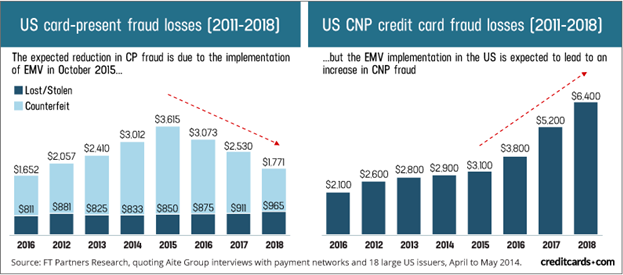How High Risk Merchants Are Navigating Risk in eCommerce
As the popularity of eCommerce grows, many aspects of digital sales are becoming more complex. Presently, there are a significant amount of risks associated with eCommerce that show no signs of ending. Due to the nature of eCommerce, card-not-present transactions make it too easy for fraudsters to rip off merchants that can result in a significant loss. Additionally, security and privacy issues can also be compromised if merchants are not taking measures to prevent them. Hackers and scammers are relentless in finding new ways to breach security measures put in place.
Despite the risks associated with eCommerce, it is certainly not a market that can be forgotten by merchants looking for prosperity. Nearly 2 billion of the world’s population partake in eCommerce, making it a desirable market for merchants.
High Risk Merchants & eCommerce
High risk merchants have more significant associated risks than a traditional merchant. With general eCommerce already having so many associated risks, one may think high risk merchants wouldn’t have a chance. However, they couldn’t be more wrong. Taking on the risks of eCommerce may seem impossible, yet thousands do it successfully.
Spanning across various industries, these merchants have their segment of risk they must watch out for. The industries are placed in this category because of the nature of the products being sold. High risk industries encompass many things, from financial services to selling CBD online. Additionally, these verticals also have higher than average chargeback and fraud ratios — however, these crossover into the general difficulties every merchant faces.
More often than not, these industries are highly regulated. In addition to being highly regulated, rules on sales of specific industries change frequently. This regulation can make card-not-present transactions complex. Age requirements for products like tobacco and CBD are hard to verify. Even more challenging, some sales of related products require proof of a government-issued license. This is a federal requirement that commonly applies to the sale of firearms. These examples of regulation that high risk merchants face is just the tip of the iceberg.
High Risk Merchants Prioritize Risk Management
Because high risk merchants are already on high alert for industry-related risks, they also manage underlying risks that all eCommerce merchants face particularly well. They are noted for having higher than average chargeback and fraud ratios. However, many low risk merchants such as subscription boxes or ongoing payment services face chargeback issues as well.
Using providers that specialize in the industry also helps to reduce problems across the board. Opening accounts specifically made for eCommerce allows merchants to run their business with peace of mind. High risk accounts willingly take on risk and aide merchants in minimizing it. Additionally, providers of these payment processing services continually stay up to date on ever-changing regulations. For example, these merchants are sure to be industry as well as PCI compliant.
Risk management and compliance is of the utmost importance. Disregarding potential risk factors can come at a high price. In severe cases, a merchant could lose their accounts containing all their eCommerce funds.
High risk merchants can lean on risk preventative measures that not only limit targeted risks but can make a significant impact on necessary risks in eCommerce.
Implement Chargeback Prevention
Chargebacks are a growing concern amongst all types of merchants involved in eCommerce. If not dealt with, chargebacks can easily get out of control and drive up fees for a merchant.
Any company who sells a product where these chargebacks occur must understand the importance of managing them for long-term success. High risk merchants are typically charged much higher chargeback fees than traditional merchants. Of course, fees may vary upon a merchant’s chargeback ratio history.
On top of these fees, many banks and processing providers set chargeback thresholds per month. If the number of chargebacks exceeds the threshold in place, an additional fee may be incurred by the merchant. In some cases, violation of the chargeback threshold may result in being dropped from the processing provider altogether.
Because of the stiff consequences, high risk merchants take chargebacks seriously. Thankfully, there are several chargeback management tactics that help minimize the risk of chargebacks:
Clearly state return and exchange policies on product pages, checkout screens and order confirmations.
- Use delivery confirmation for every shipment, and use signature confirmation for expensive orders.
- Use the same business name when possible on websites, order confirmations, customer communication and credit card statements. If company names vary, ensure customers know what name to expect on their credit card bills.
- Keep all customer correspondence and transactional records until after the chargeback window has passed.
- Stay current on evolving chargeback codes and trends to learn which transactions may be at risk. Implementing a comprehensive fraud protection solution will help manage these for you, as well as help you identify trends and areas of weakness, evaluate and prevent chargeback claims, and improve customer satisfaction.
- Integrations for the processor can be installed to verify a customer’s payment information. This process checks to make cards are not expired. Additionally, the store can rest assured that the buyer is indeed who they say they are. This preventative method keeps the chargeback ratio at bay.
Some chargeback fees here and there are inevitable in eCommerce. So, many businesses implement a cash reserve fund used solely for chargeback fees. This reserve of funds keeps their account financially secure for when they get hit with unexpected fees.
Merchants in this space are hyper-aware of chargebacks because of their risk category from the bank. With the right preventative measures in place, they can maintain their chargeback ratios at low level. Lower ratios help merchants to receive lower chargeback fees from their respective banks and processors. The result is that merchants who manage their chargebacks see an increase in revenue from lowered fees and a heightened sense of security.
Establish Fraud Detection
As eCommerce grows, so does the threat of fraudsters. Purchase fraud is rampant among card-not-present transactions. Thieves can get ahold of payment information by physically attaining the card and using it online. Hackers getting ahold of unsecured payment information is a growing form of fraud.

Source: Credit Cards
Fraud impacts all kinds of merchants, no matter what level of risk they pose. There are different kinds of reported fraudulent transactions depending on the type of business you are in. High risk merchants experience friendly fraud or personal fraud at higher levels. In addition to these, merchants are targeted by other means of fraud which can include false credit card transactions, fake returns, identity theft.
Identity theft or stolen customer logins is a popular choice from fraudsters looking for specific goods or easy ways to take advantage of a company. These products are heavily regulated and not accessible to everyone, which makes them a unique target when it comes to circumventing legalities. High risk industries such as online pharmacies or firearms dealers run into this form of fraud. By stealing an account or identity, dangerous or regulated items can easily fall into the wrong hands.
Merchants have options when it comes to combatting targeted fraud. Processors that are well-versed in high-risk industries are usually equipped with built-in fraud detection capabilities. The fraud detection engages during multiple points of the checkout process. Fraud detection services may flag larger than usual order, first-time customers, unusual location of purchase, multiple shipping addresses, or multiple cards originating from the same IP address. Multiple transactions to the same eCommerce store in a short amount of time are another typical tactic of fraudsters. Security features are continually advancing to keep up with new fraudulent tactics. Merchants who are especially concerned about reducing fraud can implement a fraud solution that not only provides analysis of high-risk purchases, but also implements a strategic human analysis that ensures that no order is ever falsely declined.
Unfortunately, when fraud occurs, merchants can be the ones to feel the effects. Fraudulent activity can result in a hefty chargeback fee that a merchant wasn’t expecting. Even worse, merchants could take a loss on inventory. That’s why fraud detection services are essential for keeping their assets protected and mitigating future losses.
The Benefits of High Risk Merchant Accounts
Merchants engaging in sales within the high risk qualified industries require the use of a specific payment processing company who has partnerships with banks that can process these types of transactions. Using a provider that is willing to take on risk is key to protecting your business. Trusted providers have experience in the industry and understand the importance of staying compliant and up to date on all laws and regulations. Additionally, high risk merchant accounts are PCI compliant, keeping merchant accounts up to date with the latest security standards. While they specialize in mitigating risks, they also help minimize typical eCommerce risks as well.
High risk merchant accounts provide an immense amount of support that can go beyond the scope of your future needs. As an eCommerce merchant, take advantage of the customer support from your provider. Allow the expert software engineers to integrate your merchant account for you. When done correctly, merchants experience lower bounce rates on mobile sites. This protects your sales by preventing customers from leaving to go to another site.
Your payment processor also has resources to technologies that will help your business run smoothly. These can be on the payment end and assist in end of transaction specifics, or they can be more user or employee facing. The right integrations allow business owners to stay on top of all things related to sales. They provide merchants with inventory management tools as well as invoice trackers. This allows merchants suspecting fraud to pinpoint where risk lies quickly.
Risk Management Is Essential
Risk management is a critical aspect for mitigating potential losses due to fraud. eCommerce comes with its own set of online dangers to manage. So, it’s essential that high risk merchants are prepared to take on risks at both ends of the spectrum. As we’ve discussed, having an effective plan in place can minimize the risk that merchants face. The risk management tools mentioned are easily attainable by merchants looking to protect themselves. It’s important to vet and select a top tier payment processing company that is specific to your business. The costs of implementing risk management far outweigh the benefits and will ensure your business stays running smoothly as it grows.
 Dustin Kapper
Dustin Kapper